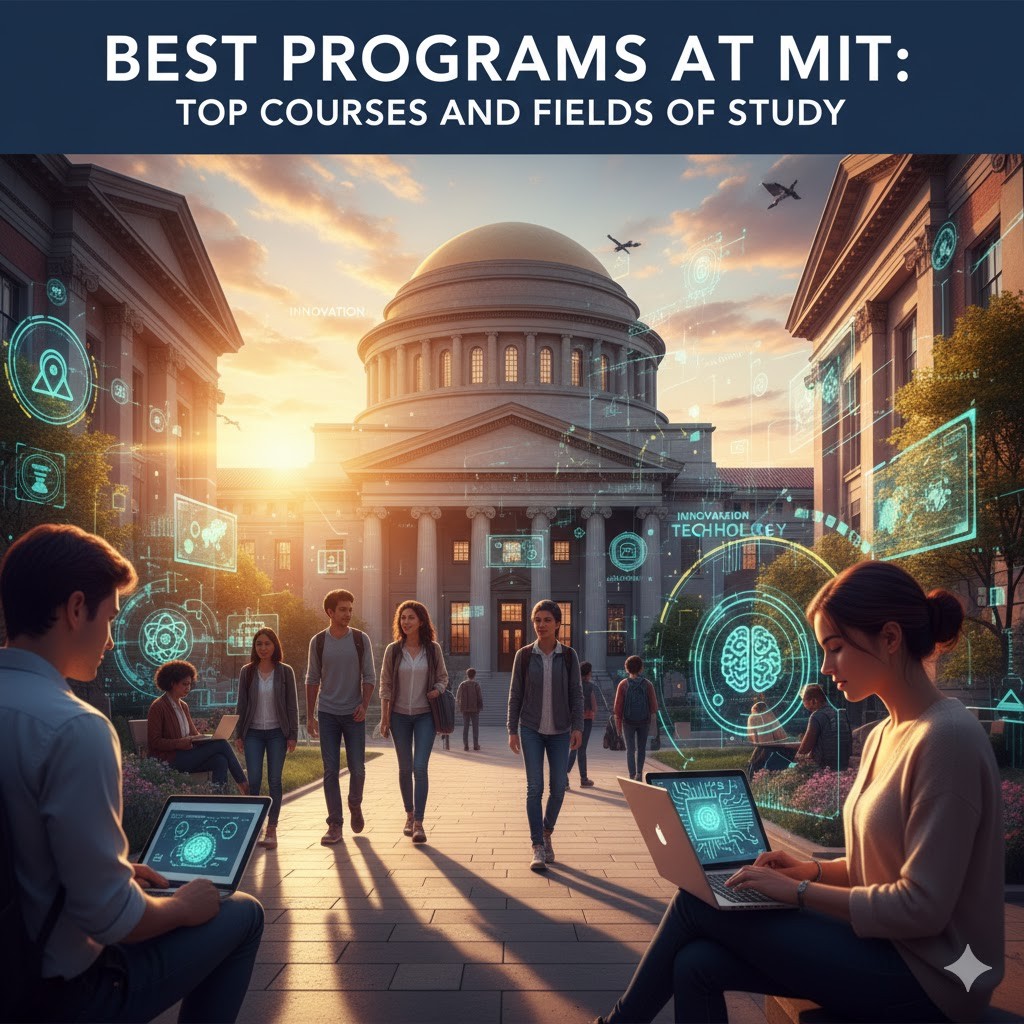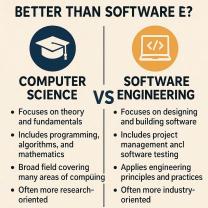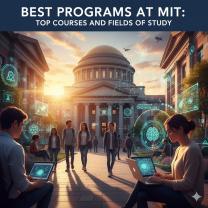What are the best programs at MIT?
The Massachusetts Institute of Technology (MIT) stands as an undisputed beacon of innovation, technology, and research excellence in the global academic landscape. Consistently ranked among the very top universities worldwide, MIT has shaped generations of scientists, engineers, entrepreneurs, and leaders who have gone on to revolutionize industries and solve some of humanity's most pressing challenges. Its vibrant campus in Cambridge, Massachusetts, buzzes with groundbreaking research, interdisciplinary collaboration, and an unparalleled commitment to pushing the boundaries of knowledge.
Students worldwide aspire to study at MIT for a multitude of compelling reasons. Beyond its stellar global rankings, prospective students are drawn to MIT's elite faculty—Nobel laureates, Turing Award winners, and MacArthur Fellows—who are not only experts in their fields but also dedicated educators. The institute's rigorous academic environment fosters a unique blend of theoretical understanding and practical application, preparing graduates for exceptional MIT career success in diverse fields. The promise of being part of a community that constantly redefines the future is a powerful motivator for the brightest minds.
This article will serve as your comprehensive guide to understanding the academic powerhouse that is MIT. We will delve into the best MIT programs and top courses at MIT, exploring what makes them so unique and impactful. We'll examine MIT academic rankings to highlight its global leadership, offer insights into MIT admission requirements, and ultimately illustrate how an education from MIT equips its graduates for unparalleled professional achievements.
What Are the Best Academic Programs at MIT?
MIT's reputation is built on a foundation of academic rigor and a relentless pursuit of knowledge across a broad spectrum of disciplines. While nearly every department at MIT is world-class, certain programs stand out for their profound impact and consistent excellence. These best MIT programs attract top talent globally and continually produce revolutionary research and innovations.
Here are some of MIT's most renowned disciplines and what makes them unique:
Computer Science and Artificial Intelligence (EECS/CSAIL): MIT's Department of Electrical Engineering and Computer Science (EECS) is frequently cited as the best in the world. It encompasses the Computer Science and Artificial Intelligence Laboratory (CSAIL), one of the largest and most important AI research centers globally.
What makes it unique: Project-based learning, cutting-edge research in AI, robotics, machine learning, cybersecurity, and algorithms. Students get hands-on experience developing real-world applications and pushing the frontiers of computing.
Famous Labs/Departments: CSAIL, MIT Media Lab.
Engineering (Various Disciplines): MIT's School of Engineering is a powerhouse, consistently ranked #1 in the world. This includes:
Electrical Engineering: From circuit design to quantum computing.
Mechanical Engineering: Robotics, manufacturing, sustainable energy systems.
Chemical Engineering: Materials science, biotechnology, environmental solutions.
Civil and Environmental Engineering: Infrastructure, climate adaptation.
What makes it unique: A strong emphasis on problem-solving, interdisciplinary collaboration, and real-world impact. Students are encouraged to develop innovative solutions to complex global challenges, often working directly with industry partners.
Physics: MIT's Department of Physics is a global leader in fundamental research, from condensed matter physics and quantum mechanics to astrophysics and cosmology.
What makes it unique: World-leading faculty, state-of-the-art facilities, and a culture of groundbreaking theoretical and experimental research. Students engage in fundamental questions about the universe.
Economics: The Department of Economics at MIT is renowned for its contributions to economic theory, econometrics, and public policy, boasting multiple Nobel laureates.
What makes it unique: A rigorous, quantitative approach to economic analysis, focusing on empirical research and policy implications. Students are trained to use data and analytical models to understand global economic phenomena.
Architecture and Planning: MIT's School of Architecture and Planning (SA+P) is highly influential, integrating design with technology, social sciences, and urban studies.
What makes it unique: A forward-thinking approach to design, focusing on sustainable urban development, smart cities, and innovative architectural solutions. The MIT Media Lab also falls under SA+P, exploring the intersection of technology, media, science, art, and design.
These MIT fields of study are characterized by their integration of research, hands-on learning, and a culture that encourages students to challenge existing paradigms and invent the future.
Which MIT Programs Are Highly Ranked Globally?
MIT's dominance in global university rankings is a consistent testament to its unparalleled academic and research prowess. For students seeking the absolute best in their chosen MIT fields of study, these rankings offer clear guidance.
MIT consistently holds top positions across multiple prestigious global ranking systems:
QS World University Rankings: MIT has famously held the #1 overall university in the world for many years, a testament to its broad excellence across all faculties.
It frequently ranks #1 globally for Engineering & Technology and #1 for Computer Science and Information Systems.
Other top-ranked subjects include Physics & Astronomy, Chemistry, Materials Science, Architecture, Economics & Econometrics, and Mathematics.
Times Higher Education (THE) World University Rankings: While THE often places MIT within the top 5 globally, it consistently highlights MIT's strength in Engineering, Physical Sciences, and Computer Science.
U.S. News & World Report (National and Global):
MIT's undergraduate engineering program has been ranked #1 in the nation for decades.
Its graduate engineering and computer science programs also consistently hold the #1 spot.
Many individual engineering disciplines (e.g., Aerospace, Chemical, Civil, Electrical, Mechanical) are also ranked #1.
Brief Comparisons with Other Top Universities:
While universities like Stanford, Harvard, and Caltech are also global academic titans, MIT often distinguishes itself by its singular focus on STEM (Science, Technology, Engineering, and Mathematics) fields and a unique "mens et manus" (mind and hand) philosophy that emphasizes practical application alongside theoretical knowledge.
Stanford University: A strong competitor, particularly in Computer Science and Engineering, often trading top spots with MIT. Stanford has a strong entrepreneurial ecosystem in Silicon Valley.
Harvard University: While a neighboring institution, Harvard is known for its broader range of top-tier programs, including humanities, social sciences, and professional schools (Law, Business, Medicine). MIT generally outranks Harvard specifically in engineering and computer science.
Caltech: Another highly specialized STEM institution, smaller than MIT, Caltech is renowned for its rigorous science and engineering programs, particularly in physics and aerospace.
These consistent MIT academic rankings underscore the institute's commitment to excellence and its status as a world leader in technological advancement and scientific discovery.
How Do You Choose the Right Program at MIT?
Choosing the right program at MIT is a deeply personal decision that requires careful alignment of your passions, career aspirations, and MIT’s unique academic strengths. Given the high caliber of all its departments, finding your niche is more about fit than about absolute quality.
Here’s a guide to help readers align their interests with MIT’s offerings:
Understand Your Core Interests and Strengths:
What problems do you want to solve? Are you fascinated by the fundamental laws of the universe (Physics), designing new technologies (Electrical Engineering), understanding human behavior through data (Economics), or shaping urban environments (Architecture)?
What kind of work excites you? Do you prefer theoretical research, hands-on building, coding, or policy analysis? MIT offers paths for all these.
Explore Research Focus Areas:
MIT is a research powerhouse. Dive into the websites of departments that pique your interest. Look at current faculty research projects. Do any align with your intellectual curiosity? For instance, if AI ethics fascinates you, look for researchers at CSAIL or the Media Lab working on those specific issues.
Many undergraduates get involved in research early through programs like the Undergraduate Research Opportunities Program (UROP).
Consider Interdisciplinary Opportunities:
MIT thrives on interdisciplinary collaboration. Many of its most innovative programs blend fields. For example, Computational Biology combines Computer Science with Biology, and Nuclear Science and Engineering often intersects with materials science.
Look for specific centers or initiatives that cross traditional departmental boundaries, such as the Abdul Latif Jameel Poverty Action Lab (J-PAL) in Economics or the Institute for Medical Engineering and Science (IMES).
Think About Double Majors and Minors:
MIT's flexible curriculum allows many students to pursue double majors or minors. If you have diverse interests (e.g., Computer Science and Music, or Mechanical Engineering and Management), explore how you can combine these fields within your course of study. This can broaden your skill set and career prospects.
Utilize MIT's Resources for Exploration:
MIT OpenCourseWare: This fantastic free resource provides access to course materials from virtually all MIT subjects. Taking a few courses in areas you're considering can give you a realistic preview of the rigor and content.
Departmental Websites: Deep-dive into each department's curriculum, faculty profiles, and student testimonials.
Student Blogs and Forums: Read about current students' experiences in different programs. Websites like MIT Admissions Blogs offer genuine insights.
Virtual Tours and Information Sessions: Attend online events to get a feel for the campus culture and specific program offerings.
By systematically exploring these avenues, prospective students can make an informed decision that truly leverages MIT’s extensive academic strengths for their individual goals.
What Are the Admission Requirements for MIT Programs?
Gaining admission to MIT is incredibly competitive, reflecting its status as a top-tier institution. While specific requirements vary slightly between undergraduate and graduate levels, a consistent theme is the expectation of exceptional academic achievement, intellectual curiosity, and a demonstrated potential for innovation.
Here’s a breakdown of MIT admission requirements:
Undergraduate Admissions:
Rigorous High School Curriculum: Strong performance in advanced math (calculus), science (physics, chemistry, biology), and English. MIT also values a strong foundation in humanities and social sciences.
GPA Expectations: While MIT doesn't state a minimum GPA, successful applicants typically have near-perfect grades, often in challenging courses (AP, IB, honors).
Standardized Tests: MIT is test-optional for the 2023-2024 application cycle, but strong SAT/ACT scores are generally seen as beneficial indicators of academic preparedness if submitted. For international students, English proficiency tests (TOEFL/IELTS) are often required.
Essays: Several short essays are required, focusing on personal qualities, aspirations, and how the applicant would contribute to the MIT community. Authenticity and passion are key.
Recommendation Letters: Two letters from teachers (one math/science, one humanities) are required, along with one from a school counselor. These should highlight your academic prowess, character, and potential.
Extracurricular Activities: Demonstrated passion and achievement in extracurriculars, especially those related to STEM, innovation, leadership, and community service. MIT looks for students who actively "build" and "do."
Portfolios (Optional but Recommended for Specific Fields): For programs in architecture, art, or music, submitting a portfolio can significantly strengthen an application.
Graduate Admissions:
Undergraduate Degree: A bachelor's degree from an accredited institution, usually in a relevant field to the desired graduate program.
GPA Expectations: Very strong undergraduate GPA, often above 3.5 or 3.7 on a 4.0 scale, with particular emphasis on grades in core courses.
Standardized Tests: GRE scores are typically required for most graduate programs, though some departments may waive them or make them optional. English proficiency tests (TOEFL/IELTS) are mandatory for international students from non-English-speaking countries.
Letters of Recommendation: Usually three letters from professors or supervisors who can speak to your research potential, academic abilities, and suitability for graduate-level study.
Statement of Purpose/Personal Statement: A compelling essay outlining your research interests, career goals, reasons for applying to MIT, and how your background prepares you for the program.
Research Experience: For STEM fields, significant research experience (publications, presentations, lab work) is highly valued and often expected.
Portfolios: Required for graduate programs in architecture, urban planning, and certain design-focused fields.
Tips for Standing Out:
Research Experience: Actively pursue research opportunities, even at the high school or undergraduate level. This demonstrates initiative and intellectual curiosity.
Leadership and Innovation Projects: Showcase your ability to lead, collaborate, and innovate. This could be through starting a club, developing a unique project, or making a tangible impact in your community.
"Builder" Mentality: MIT values students who are not just learners but also doers. Highlight projects where you've built, created, or solved real problems using your skills.
Demonstrate Fit: Clearly articulate why MIT specifically—its faculty, labs, and culture—is the ideal place for you to pursue your aspirations.
Navigating MIT admission requirements demands a comprehensive and strategic approach, emphasizing both academic excellence and a demonstrated passion for innovation and impact.
How Do MIT Programs Prepare Students for Career Success?
MIT's approach to education is intrinsically linked to fostering unparalleled MIT career success for its graduates. The institute doesn't just impart knowledge; it cultivates problem-solvers, innovators, and leaders who are highly sought after across every major industry sector. This exceptional preparedness is a direct result of several integrated factors:
Strong Ties to Industries: MIT maintains deep, long-standing connections with leading global industries, particularly in tech, aerospace, finance, biotech, and energy. This ensures that the curriculum remains relevant, cutting-edge, and aligned with market demands. Many research projects are funded by or conducted in collaboration with industry partners, providing students with real-world exposure and networking opportunities.
Robust Career Development Programs: The MIT Career Advising & Professional Development (CAPD) office provides extensive resources, including career counseling, resume and cover letter workshops, interview preparation, and job fairs. They connect students with thousands of employers seeking MIT talent for internships and full-time positions. Specific departmental career services also offer tailored support.
Vibrant Startup Incubators and Entrepreneurial Ecosystem: MIT is a global epicenter for entrepreneurship. The Martin Trust Center for MIT Entrepreneurship, the Legatum Center for Development and Entrepreneurship, and numerous student-led initiatives foster a culture of innovation and venture creation. Students have access to mentorship, funding opportunities, and resources to transform their ideas into successful startups. This culture produces a high number of entrepreneurs who launch their own companies.
Unmatched Alumni Network: The MIT alumni network is arguably one of the most influential and supportive in the world. Graduates maintain strong ties to the institute and to each other, creating a powerful web of connections across every industry and continent. This network provides invaluable mentorship, job opportunities, and collaborative ventures for current students and fellow alumni.
Focus on Practical Application and Problem-Solving: MIT's "mens et manus" (mind and hand) philosophy ensures that theoretical knowledge is always coupled with practical application. Students are trained to solve complex, real-world problems, making them highly effective and adaptable employees or founders from day one.
Examples of Successful MIT Graduates and Where They Work:
MIT alumni are found at the helm of virtually every major industry and groundbreaking organization:
Tech Giants: Founders, CEOs, and lead engineers at companies like Google, Apple, Microsoft, Amazon, Facebook, and countless startups.
Aerospace & Defense: Leaders at NASA, SpaceX, Boeing, Lockheed Martin, and innovative aerospace ventures.
Finance & Consulting: Top positions at investment banks, hedge funds, private equity firms, and management consulting giants like McKinsey, Bain, and BCG.
Biotech & Pharma: Researchers, executives, and founders in leading pharmaceutical companies, biotech startups, and healthcare innovation.
Government & Academia: Influential roles in government agencies, think tanks, and as faculty at other top universities globally.
Entrepreneurs: MIT has famously launched thousands of companies (often referred to as 'MIT spin-offs'), collectively generating trillions of dollars in revenue and millions of jobs.
The comprehensive ecosystem at MIT—from its cutting-edge curriculum and research opportunities to its entrepreneurial spirit and powerful network—ensures that its graduates are not just ready for the future, but are actively shaping it.
FAQ Section:
Is MIT good for international students?
Absolutely. MIT is highly welcoming to international students, who make up a significant portion of its student body (around 30% of undergraduates and over 40% of graduate students). The institute provides extensive support services, including international student offices, cultural programs, and financial aid opportunities for eligible international applicants, making it a very inclusive environment for students from around the globe.
What is MIT best known for academically?
MIT is best known for its exceptional programs in Science, Technology, Engineering, and Mathematics (STEM). Specifically, it consistently ranks #1 globally for its Engineering and Computer Science programs. Beyond these, its departments in Physics, Economics, Architecture, and Materials Science are also world-renowned for their groundbreaking research and innovative approaches to education.
How much does it cost to study at MIT?
For the 2023-2024 academic year, annual tuition and fees for undergraduates are approximately $60,000, with total estimated costs (including housing, food, personal expenses, and health insurance) reaching around $80,000. However, MIT is committed to affordability and has a need-blind admissions policy for all students (including international), meeting 100% of demonstrated financial need with grants and scholarships, meaning many students pay significantly less than the sticker price. Graduate student costs vary by program but also often include financial aid packages.
What is the acceptance rate?
MIT's acceptance rate is extremely low, reflecting its highly selective nature. It typically hovers around 4-5% for undergraduate admissions, making it one of the most competitive universities in the world. Graduate program acceptance rates vary by department but are generally also very competitive.
Conclusion:
The Massachusetts Institute of Technology continues to stand as a paragon of academic excellence, technological innovation, and groundbreaking research. Its best MIT programs—particularly in Computer Science, Engineering, Physics, Economics, and Architecture—are consistently ranked among the top globally, attracting and nurturing the brightest minds. An MIT education is synonymous with rigorous problem-solving, hands-on learning, and a relentless drive to impact the world.
Choosing the right program at MIT is a journey of aligning one's deep-seated interests and long-term MIT career success aspirations with the institute’s unique academic strengths and unparalleled research opportunities. Whether you aspire to be an entrepreneur, a leading scientist, a groundbreaking engineer, or a thought leader in economics, MIT provides a transformative environment designed to equip you with the skills, network, and mindset to achieve your ambitions.
We strongly encourage prospective students to explore MIT’s vibrant learning culture, delve into its innovation ecosystem, and discover how its world-class faculty and cutting-edge resources can propel them towards an extraordinary future. The path to shaping tomorrow's world often begins under the iconic Great Dome.














AlumniSeeker
on October 11, 2025The discussion of the MIT alumni network and startup incubators (Martin Trust Center) is compelling. The career support clearly extends far beyond graduation.